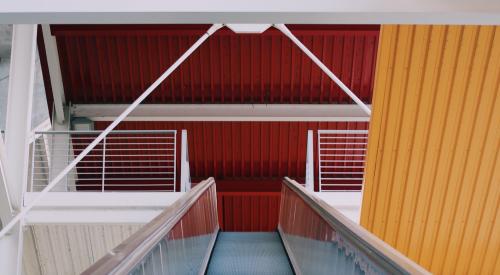|
The NAHB and the fire safety industry — represented by the National Fire Protection Association (NFPA) — have long been at odds about whether sprinklers make sense in single-family homes. Past votes on the issue have decided against the mandatory sprinklers due to design and maintenance issues.
At a Dec. 11 meeting of ICC officials, however, the prospect of home sprinklers again moved closer to becoming mandatory. The NAHB had written a letter of appeal, asking for a recommendation to be made that the ICC board “set aside” a vote on mandating residential sprinklers. They made the appeal based not on technical arguments against sprinklers — of which they have many — but on procedural basis. In laymen's terms, they tried to throw a wrench in the gears.
That wrench didn't derail the vote, as hoped, but it did make an impression. ICC officials declined NAHB's request, but they did agree to bring up the association's procedural concerns with the ICC board.
What types of concerns?“It had to do with the fact that a number of the people who voted in an earlier vote were not building officials,” said Calli Schmidt, NAHB's director of Environmental Communications, the day after the Dec. 11 meeting. “Also, there are issues related to funding that allowed certain ICC members to attend, plus concerns with the vetting of governmental members.”
NAHB's angleThe NAHB and Habitat for Humanity International both oppose making sprinklers mandatory for single and two-family housing. Sprinklers are already part of multifamily codes, they note, and optional for single-family and townhouses.
Prescribing them for cash-strapped builders and buyers, they argue, doesn't make sense. It's an economic burden that ignores other, lower-hanging solutions to house fires.
The NAHB and Habitat point to smoke detectors, estimating that 890 house fire fatalities nationally (nearly a third) could be prevented each year simply by making sure every house has even one working fire alarm.
In addition, they've conducted research showing that the cost of installing home sprinklers is far higher than fire officials estimate — once you include permitting, tap and inspection fees. Their estimate of actual costs is double the $1 per square foot price tag fire officials have suggested.
The association has also debunked the idea that lower insurance premiums will effectively pay for the sprinklers over a short time. They note that “even under the lowest cost estimates ($2,465), the annual mortgage payment would increase by $193, roughly double the upper bound on the average insurance savings.”
Decision pointNo matter how compelling the facts, however, the NAHB anti-sprinkler campaign has been a tough one. Fire safety can be an emotional issue and has to be challenged in a nuanced way so as not to appear insensitive. Also, as one NAHB staffer pointed out, ICC meetings “tend to be packed with all these fire officials and only a few of us from the building community.”
By the time you read this article, it's likely that the ICC board will have made a final vote on whether to add home sprinklers to your future projects. At this writing, the meeting is scheduled for the end of December. Check in at www.housingzone.com for an update.
|











